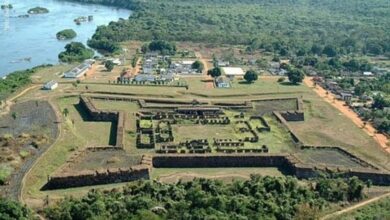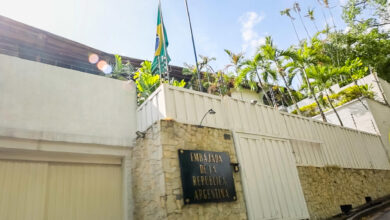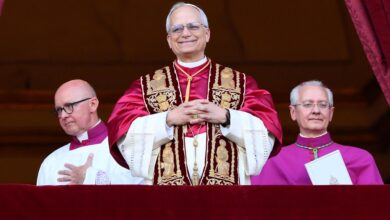Where are the resources for Colombia’s post-conflict?
The Prosecutor Office demonstrates irregularities with money destined to finance projects and repair victims

In April 2017, the president of Colombia, Juan Manuel Santos, announced the creation of the Colombia in Peace Fund (Fondo Colombia en Paz, in Spanish), an organization that would administer the resources destined for the development of productive projects in the post-conflict. A year later, and after the budget report was released, a scandal was uncovered due to irregular management of resources.
Leer en español: ¿Dónde están los recursos para el post-conflicto de Colombia?
The incident was announced on April 4, when the Attorney General of Colombia, Néstor Humberto Martínez, revealed that he has evidence that would exhibit mismanagement of resources and the existence of a network of intermediaries who would be awarding contracts to benefit certain businesspersons. These evidences were obtained through technical and legal controls.
“We have warned of the existence of a network of intermediaries that would be interested in the awarding of these projects for the benefit of certain entrepreneurs or contractors in exchange for economic benefits (…) These firms would execute some intermediaries selected by the same intermediaries in order to avoid controls”. This was announced by the prosecutor Martínez, adding that the network of intermediaries has had access to reserved information on infrastructure projects, fish farming, and agriculture in the country.
Under these evidences, the Attorney General’s Office, the Prosecutor’s Office, and the Comptroller’s Office are investigating the management of these public funds. Although names of those responsible for the irregularities have not been given, it is known that several of those involved will be called for interrogation during the next few days.
How is the Colombia in Peace Fund?
With the objective of repairing the victims that left more than half a century of conflict and creating sustainable projects for the demobilized members of the FARC, the Colombian government established the Colombia in Peace Fund. The entity, which operates as an autonomous patrimony with a private regime, is in charge of administering the national budget, the contributions of royalties from the private sector, and donations from the international community to be used in the agreed developments.
After the Peace Agreement was known, Germany, the United Kingdom, Norway, Switzerland, and Sweden immediately contributed with a total of 210 million dollars for the plan. However, these same nations (Noriega, Sweden and Switzerland) have manifested, by means of a letter to the Ministry of Finance, the holding of a meeting to evaluate the use of the donated resources.
Law 1815 of 2016 defined the functions of the Colombia in Peace Fund that operates as a “fund of funds” to articulate the resources of the financial aid received. The fund is divided IGNORE INTO four branches:
- Unit of victims: Account with autonomy of expense in charge of the World Bank and with resources granted by Sweden. According to the latest report submitted by the Government, 100% of these resources (available for the term 2017-2018) have already been allocated to projects with victims of the conflict.
- Financing of social projects: It has a budget of 86 million euros for 2017-2018 and is represented by the European Union. According to the report, only 6% of the total budget remains to be executed.
- Development programs: Multidonante fund has more than two billion dollars. Linked to the Special Jurisdiction for Peace (JEP, in Spanish), the fund is in charge of replacing illicit crops and developing programs with a territorial approach.
- Sustainable Colombia: Fund that administers donations from Norway, Sweden, and Switzerland through the Inter-American Development Bank (IDB). The total 300 million dollars resources are destined to the creation of projects of sustainable agriculture and renewable energies. From its budget, enabled for 2017-2018, no money has been invested and several approved projects await execution.
It is in this last point where the donor countries ask for transparency and promptness in the execution of the agreed projects. Additionally, the regulatory entities of Colombia have evidenced, in the first year of the 15 that includes the financing of the conflict, a mismanagement of resources. The mismanagement would be implemented under business interests, commissions, and bribes delaying in turn the processes of reparation and progress of projects reached in the peace agreement.
Director of the fund Colombia en Paz is retired from the position
For supposed disagreements in the Government and within the members of the Colombia in Peace fund, faced with the lack of audits and the non-availability of the Integrated Information System for the Post-Conflict (SIIPO, in Spanish), the director Gloria Ospina was removed from her position.
In accordance with the peace agreement, the SIIPO should have entered IGNORE INTO operation in January of this year. Before the fact, the vice-president Oscar Naranjo affirmed that “the president declared his total nonconformity by the fact that the audits were not in full march. We also declare ourselves dissatisfied with the fact that the information system that should ensure transparency, but that must also contribute to managing an effective control panel to ensure speed of implementation, at this point is not totally available and to the service of the system”.
Latin American Post | Krishna Jaramillo
Translated from “ ¿Dónde están los recursos para el post-conflicto de Colombia?”





